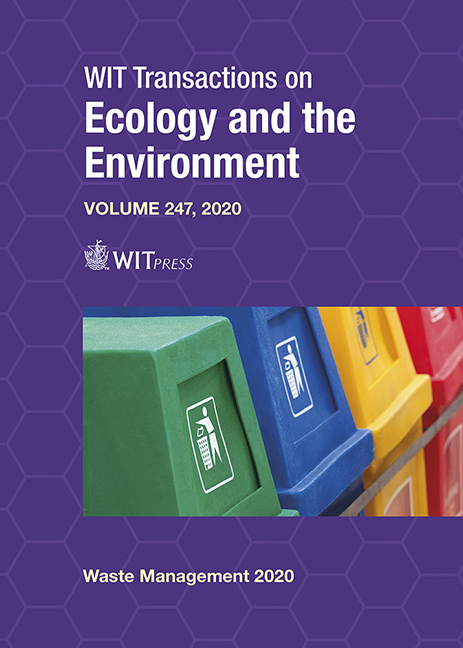BIODEGRADABLE PLASTICS FRAGMENTATION IN SOIL AND WATER: LESSONS LEARNT AND COMPARATIVE ASSESSMENT WITH HYDRO-BIODEGRADABLES
Price
Free (open access)
Transaction
Volume
247
Pages
13
Page Range
1 - 13
Published
2020
Paper DOI
10.2495/WM200011
Copyright
WIT Press
Author(s)
SULTAN MAJED AL-SALEM
Abstract
In the current climate, there is a surge of controversy surrounding the topic of plastics. Undeniably and unavoidably, plastic has become a crucial part of this generation. However, the inappropriate disposal of plastic waste, as well as the increase in consumption, provokes serious environmental issues. The rising environmental awareness on a global scale has imposed considerable pressure for associated authorities to take actions. This includes the research into alternative options to conventional plastics which is latched on to a negative reputation. Nevertheless, the greenness of these so called environmentally friendly alternatives is often questionable. Since April 2015, the European Parliament and the Council established Directive (EU) 2015/720, has amended Directive 94/62/EC with regards to reducing the consumption of lightweight plastic carrier bags. Subsequently, the directive aims to reduce the level of littering of these bags which accumulates in the environment where more plastic-related problems (i.e. marine pollution) aggravates. In this work, a comprehensive fragmentation analysis was conducted on biodegradable plastic bags claimed to be green and environmentally friendly for arid environments. Various biodegradable compounds were tested and verified for such claims in this work. The first stage of the experimental campaign involved conditioning the samples under UV (to trigger decomposition) until fragmentation is reached; and record the Fourier Transform Infrared Spectroscopy spectra every 72 hours. The use of a reference material for comparative analysis was also applied, and the material was chosen to be polylactic acid. Furthermore, fragmentation in water was conducted where the plastic is conditioned in an aqueous environment. Lastly, the samples were mixed with sand and mud, and weathering induced fragmentation was continued. Infrared analysis was undertaken and the rate of biodegradation was determined. The above analysis was also used to draw lessons learnt from this exercise for oxo and hydro-biodegradables; and how to best utilize them as a waste management mitigation strategy.
Keywords
biodegradation, polyester, starch, polymer waste, waste management





